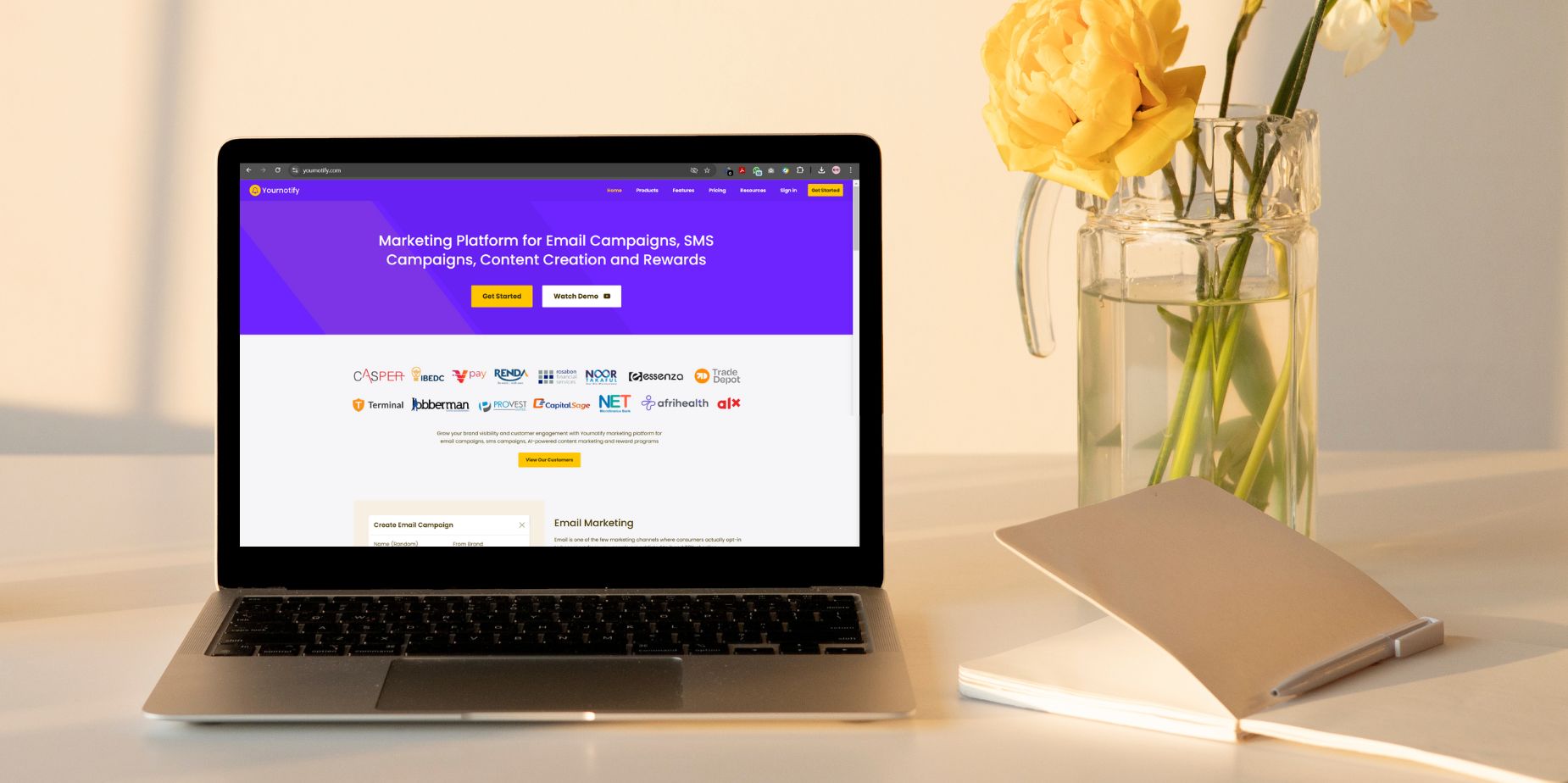Email marketing remains one of the most effective channels for businesses, boasting an average ROI…

The Ultimate Guide to B2B Email Marketing in 2024
Email marketing remains one of the most powerful tools in a B2B marketer’s toolkit, especially in 2024. With every $1 spent on email marketing, businesses are seeing an average return of $36 (Source: Litmus). This high ROI makes email a critical channel for reaching decision-makers, nurturing leads, and converting prospects into customers.
However, the landscape is evolving. From changing regulations to personalization at scale, there are new strategies that B2B marketers must adopt to maximize their email marketing efforts in 2024. This ultimate guide will walk you through actionable steps, trends, and best practices that businesses, brands, and startups can implement to create successful email campaigns.
1. Understand the Power of B2B Email Marketing in 2024
Email is essential for B2B because it provides a direct, personal way to communicate with leads and customers. But the expectations in 2024 have evolved. Recipients expect more than promotional content—they seek value. Here’s why email should remain a priority:
- Personalization: 82% of marketers reported increased open rates with personalized email content (Source: Statista).
- Automation: Automated email sequences can drive 320% more revenue than non-automated emails (Source: Campaign Monitor).
- Engagement: B2B buyers engage more with email than other channels, with 59% of professionals preferring email for communication about a business product or service (Source: HubSpot).
Read more related articles: How to Use Automation in Email Campaigns for Better Efficiency
Key takeaway: Email is still one of the most effective ways to connect with your audience, but in 2024, it’s all about delivering hyper-personalized, relevant content at the right moment.
2. The Foundations: Build a High-Quality Email List
An email marketing campaign is only as good as its list. The foundation of success lies in building a list of engaged, qualified leads. Avoid purchasing email lists—this will only damage your brand’s credibility and hurt deliverability. Instead, focus on growing an organic, high-quality list through:
- Content Offers and Lead Magnets: Use white papers, case studies, and eBooks to attract decision-makers in your niche.
- Webinars and Virtual Events: 75% of B2B professionals say webinars and virtual events are effective ways to capture qualified leads.
- Intent Data and Lead Scoring: Implement strategies to identify leads based on their engagement and behaviors, then segment your list to target them with personalized emails.
Read more related articles: How To Use Data Analytics to Improve Your Email and SMS Campaigns
Key takeaway: Create multiple touchpoints where potential customers can opt in, ensuring you grow a list of interested and engaged subscribers.
3. Crafting the Perfect Email Campaign in 2024
Your B2B audience is bombarded with hundreds of emails daily. To stand out, your emails need to hit the mark in three areas: subject lines, email copy, and calls-to-action (CTAs).
1. Subject Lines:
The subject line is the first thing your recipients see, so it needs to capture attention. Here are some tips for 2024:
- Keep It Short & Actionable: Aim for 6-10 words, with verbs that inspire action.
- Personalization: Use recipient names and company names where possible.
- A/B Test Subject Lines: Test different subject lines to find out what resonates most with your audience.
2. Engaging Email Copy:
Your email copy should deliver value in a concise and conversational tone. Key strategies:
- Address Pain Points: Showcase how your product or service solves your prospect’s problems.
- Be Personal: Speak directly to your recipient using dynamic content to tailor the message.
- Keep It Skimmable: Use short paragraphs, bullet points, and bolded text to make it easy to read.
3. Compelling CTAs:
Every email should end with a clear call to action. Whether you’re driving traffic to a landing page, encouraging a demo request, or simply offering more educational content, the CTA should be:
- Clear & Visible: Make sure it’s placed prominently within the email.
- Aligned with Your Offer: Ensure that the CTA is relevant to the content of the email and the needs of your audience.
- Action-Oriented: Use strong verbs like “Get Started,” “Claim Your Free Demo,” or “Download Now.”
Read more related articles: A/B Testing in Email Marketing: What You Need to Know
Key takeaway: In 2024, personalization, concise content, and clear CTAs are critical to driving engagement and conversions.
4. Leveraging Automation and AI for Maximum Impact
B2B email marketing in 2024 will rely heavily on automation and artificial intelligence (AI). AI-powered tools can now analyze vast amounts of data to predict customer behaviour, personalize content at scale, and optimize email send times. Here’s how to leverage automation effectively:
- Drip Campaigns & Nurture Sequences: Use automation to send a series of emails based on your prospect’s actions or stage in the sales funnel.
- Predictive Analytics for Timing: AI can analyze the best time to send emails based on engagement data, improving open and click-through rates.
- Dynamic Content & Hyper-Personalization: AI can customize content within emails based on the recipient’s behavior, preferences, or industry.
Read more related articles: How to Create Compelling Calls-to-Action for Your Email Campaigns
Key takeaway: Automation and AI tools will help B2B marketers deliver personalized, timely, and relevant content, increasing engagement and driving more conversions.
5. Measuring Success: Key Metrics to Track
Without proper tracking and analysis, even the best email campaign can fall short of its potential. Here are the top metrics to track in 2024:
- Open Rate: Aim for an open rate of 15-25% as a baseline. Lower than that? Reassess your subject lines and list segmentation.
- Click-Through Rate (CTR): A strong CTR for B2B campaigns falls between 2-5%. Focus on improving your CTA and copy if it’s below this range.
- Conversion Rate: The ultimate goal—conversions. Track how many email recipients took your desired action, like signing up for a demo or downloading a resource.
- Bounce Rate: Keep your bounce rate under 2%. High bounce rates signal that your list may need cleaning.
Use tools like HubSpot, Buzzsumo or Yournotify to track these metrics and continuously optimize your campaigns.
Read more related articles: The Role of Personalization in B2B Email Marketing: A Guide to Enhanced Engagement and Conversions
Key takeaway: Regularly track and measure your email campaign performance using these key metrics, and don’t be afraid to pivot based on the data.
6. Compliance: Navigating Email Regulations in 2024
As data privacy becomes increasingly important, staying compliant with global regulations is crucial for B2B marketers. Key laws to be aware of in 2024 include:
- GDPR (Europe): Ensure you have explicit consent from your email recipients, and always provide a clear way to unsubscribe.
- CAN-SPAM (USA): Avoid misleading subject lines, and include your business address in every email.
- CCPA (California): Provide transparency on data collection and allow recipients to opt out of data sharing.
Staying compliant not only avoids legal issues but also builds trust with your audience.
Read more related articles: How to Build an Effective Content Marketing Funnel for SaaS Products
Key takeaway: Always stay up-to-date with email regulations and ensure your campaigns respect recipient privacy.
Conclusion: Maximizing Your B2B Email Marketing in 2024
B2B email marketing in 2024 is all about personalization, automation, and delivering value at the right time. By building a high-quality list, crafting engaging content, leveraging AI and automation, and staying compliant, businesses, brands, and startups can achieve stellar results.
Remember, email marketing is a long-term game. Consistency and optimization based on real-time data will help you nurture leads and convert them into loyal customers.


